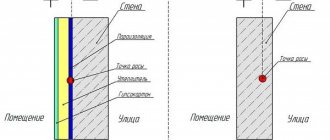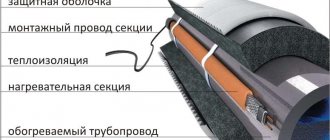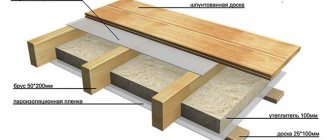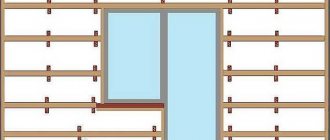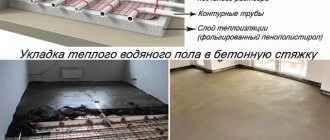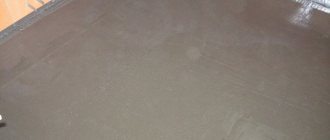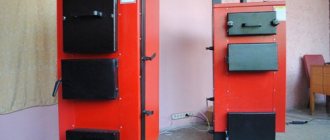What materials will be needed?
For thermal insulation of modern double-glazed windows, it is preferable to use the same modern materials. In this case, one of the following options can be used as insulation for the window structure:
- expanded polystyrene;
- some “warm” mixture;
- mineral wool;
- polyurethane foam.
When choosing one or another of them, it is necessary to pay attention not only to the properties of each material, but also to the features of installation and further use (external and internal). The most convenient option is, of course, polyurethane foam, but under the influence of ultraviolet rays, temperature changes or even air, it is easily destroyed. Therefore, it is advisable to carry out external work using “warm” mixtures. And to waterproof the plaster solution, you can use both painting and a primer with moisture-proof properties.
Note! The only drawback in this case is that it is difficult to select consumable insulating material, for the installation of which it would not be necessary to dismantle slopes and other components. Only under such conditions can one accurately determine what the material should be and how much of it will be required.
To seal small cracks in places where the window profile adjoins the window sill and other elements, you can use sealant. Even an ordinary housewife can handle this kind of work - you just need to follow the instructions for use indicated on the package.
How to insulate a window for the winter with your own hands
All measures to insulate a double-glazed window must be carried out before the onset of the cold period. Because materials such as dry mix and sealant should be used only at certain temperatures, as they may lose their properties. Air humidity should be optimal, there should be no draft. Insulation must be done simultaneously from the outside and inside.
Materials used Various materials and methods can be used here. Such as :
- Construction foam. It is the best means for window insulation. As it expands, all voids are filled. But the foam must be protected from direct UV rays and temperature fluctuations.
- Using mineral wool. It has good thermal insulation properties.
- Polystyrene foam or polystyrene foam for insulation of slopes.
Note: Rigid insulation is used in cases where the installation seam is no wider than three millimeters. In others it is better to use mineral wool.
Silicone sealant is used when processing plastic parts of windows to eliminate blows. Using dry mixtures, slopes on the street side are insulated. Construction tape is used instead of sealant or on top of it.
External insulation
External insulation work includes insulation of the slope and ebb on the street side. If insulation of the outer slope has not been done previously, then all actions will be useless. After time, the window will still be blown out, in addition, the inner wall may become damp and moldy. Caulking the external cracks will not lead to anything, because the plaster and foam will gradually become unusable.
What is the essence of thermal insulation?
Thermal insulation of double-glazed windows consists, as noted above, precisely in the slopes. If we talk about other structural elements, then only troubleshooting will be required. For example, drafts never appear due to the profile. And modern technological plastic, which is used in windows, is no longer wood; it is incapable of either “moving out” or drying out.
Plastic windows lose thermal energy if certain sections of the structure become depressurized. And if you do not want the cold to penetrate inside the room, then take care of insulating the slopes or start looking for the causes of the problems. Well, let's proceed directly to how to insulate double-glazed windows, and let's start with insulating the slopes of window structures.
7 ways to insulate windows for the winter
Previously, we gave several instructions on how and what is the best way to insulate windows for the winter; in addition to this article, we advise you to read this information, see details here
Sequence of work on internal thermal insulation
Those who want to get a positive result from insulating slopes need to be prepared for the fact that the process is carried out both outside and inside. Both options for carrying out work have features and a certain sequence of execution. Therefore, we will consider each of them separately.

The internal slope is insulated according to the following plan:
- Leave the new window for several days so that it is well fixed in one place.
- Inspect the foamed space. If there are gaps, add foam and leave until completely hardened.
- Trim off excess areas.
- Treat the surface of the slope with an antibacterial primer composition. The solution will help resist the growth of mold and mildew, and will also increase adhesion for subsequent stages.
- Level the slope using plaster. A flat surface will make a good base for tightly fixing the insulation.
- The plastered and dried base is again covered with antibacterial primer, for the same reasons.
- Glue the insulation. To do this, use liquid nails or glue suitable for the selected material.
- The corner is covered with a plastic or metal corner and plastered together with the total area of the slope; a reinforcing mesh must be used. Fiberglass will make the plaster layer strong and reliable.
After this, they begin decorating. Painting, tiling, or another option chosen by the home owner will do.
We are engaged in insulation of slopes
As you know, in metal-plastic windows the slopes must be plastic. The lining must be plastic, and it must be hard. What causes this? The fact is that this material is ideal for additional thermal insulation.

And here the opening formed between the window frame and the wall surface must be blown out using polyurethane foam. Of course, there are other options - for example, insulating boards (they are made from basalt fiber) or foam insulation. Therefore, you can choose the material that is ideal for your current purposes.
The wall must be insulated both from the inside and outside. But in this case, the materials used will not only insulate, but also protect. The insulator itself is necessary for protection from various external negative factors.
Correcting skewed sashes
As you know, in some cases even plastic window structures can shrink. And, alas, nothing can be done about this. As a rule, houses that were built most recently “suffer” from this problem. And due to shrinkage, accordingly, the sashes warp slightly, which has a negative impact on the thermal insulation characteristics of the structure. But this problem can be solved - for this you need to debug the fittings.

What tools will you need?
The pressure of the sashes can be adjusted manually using special eccentrics. When the handle is turned, they move beyond the "calling areas". Such elements must be installed along the entire perimeter of the frame. And to ensure the tightest possible pressure, the eccentric must be turned strictly clockwise.

Each of the elements mentioned above has a special “picture”. If it is directed towards the street, this means that the clamp is loose. But if this pointer is directed towards the seal made of rubber, then the window sash is perfectly pressed against the frame structure.
A little about loops
Hinges in metal-plastic window structures also have their own mechanism, which is responsible for pressing. The device is adjusted using a special hexagon. Here you should be guided by one simple rule: if the tongue is pulled out strongly, then the window sashes fit snugly. To extend this tongue, you need to twist the hexagon, while going counterclockwise. If the hinges in the window are located on the right, you need to turn the hexagon in the opposite direction. That is, here it is clockwise. It turns out that there is nothing complicated in this event - eliminating the distortion is easy and simple.
Note! If the manipulations described above did not bring any results, and cold air continues to penetrate into the apartment, then, most likely, the problems are more serious. Here all you have to do is turn to specialists for help.
We continue to talk about how to insulate double-glazed windows. Now let's find out how to prepare windows for winter.
Changing the rubber seal
What is a rubber seal? Its main function is to ensure the tightest possible fit between the window frame and sashes. To make it more reliable, it is made of rubber, so it does not allow cold air to pass through even if it is closed.

With proper care and periodic treatment with special mixtures, the seal will last quite a long time. But only some owners of double-glazed windows do this, because this element is almost always hidden behind the doors. Well, only a few people know that the seal should be periodically treated with something.
For this reason, after about five years, the density of the element is lost. When the seal becomes unusable, it must be replaced. To do this, the windows are removed from the sashes, then the glazing bead is removed and the sealing material itself is removed. Replacing the latter is not difficult: the old seal is removed, and the new one is placed through the groove. If desired, the element can be fixed with glue. There is no need to worry about the difference in colors - the element can be either gray or black, but there are no special differences between them.
Note! Extreme care should be taken when removing and installing the bead. The fact is that it is extremely fragile, so it is quite easy to break it. And if the bead is broken, the structure cannot be put back together.
What other insulation options are there?
It is worth noting that there are other ways to protect your home from the cold. Let's take a look at some of them.
Method No. 1. Wool blinds
A non-standard method of thermal insulation of a window structure, but quite effective. Ordinary blinds must be wrapped with strips of woolen fabric, which will prevent the cold from entering the room.
Method No. 2. Window sill insulation
Cold air can also penetrate through the joints between the elements of the window sill. Therefore, these joints should be carefully sealed. In addition, in case of improper installation, “black holes” may appear under the window sill itself, which means that the element must be dismantled, and the gaps between the block and the slab must be carefully processed.

For this purpose, the plugs are opened, the window sill is unscrewed with a screwdriver, and there you will find all the cracks (if any) that allow cold air to pass through.
Method number 3. Application of heat-saving film
A double-glazed window can also be thermally insulated using heat-saving film - a cheap but at the same time effective material. It must be glued in such a way that no air bubbles remain under it, since not only the aesthetic indicators of the entire structure, but also the thermal insulation properties will depend on this.

And if you decide to use such a film, then it is better to take care of gluing it before you begin installing the double-glazed windows themselves. Although, in principle, this can be done after installation is completed.
Video - Gluing heat-saving film
Method number 4. Curtains
This may sound ridiculous, but curtains can be another way to insulate double-glazed windows. These elements act as a barrier to air, which means it does not let it through in winter (if it does penetrate through the window structures). Moreover, the air passing through the curtains even warms up a little.

Video - Preparing plastic windows for winter
Where does insulation begin?
Thanks to correctly carried out measures aimed at thermal insulation of double-glazed windows, you will get rid of all the mistakes that were made at the installation stage. If you want, you can even make some design changes to the windows - for example, install a window, replace the sashes that open with blind ones or vice versa, make adjustments to functionality, etc. And where does the thermal insulation procedure itself begin? First of all, from the choice of this or that technology, consumables, from the development of a detailed plan for further work, and in order to do all this correctly, it is necessary to objectively assess the general condition of the window system.

Note! Despite the fact that work on thermal insulation of plastic windows can be carried out at almost any time of the year, it would be correct to do this during the warm period. In addition, there is another important condition - the weather must be dry and windless.
But, by the way, in cold weather it is extremely easy to detect where the cracks are located through which the cold penetrates into the room. Now let’s look at what “weak points” all metal-plastic structures without exception have. Such places include:
- seal of the sash that opens;
- emptiness under the slopes and window sill;
- bead location area;
- the place where the window frame adjoins other structural elements of the entire structure;
- window fittings (all).
In addition, you should definitely pay attention to the width of the window sill. The fact is that it should not cover the heating radiators that are located underneath it. Yes, of course, a wide window sill is extremely convenient, but from a technical point of view it is not entirely correct.
No. 2. We identify weak points
To effectively insulate plastic windows, you must first understand where the seal is broken. The only thing you can immediately remove from the list of suspects is the frame: multi-chamber plastic is a good heat insulator, it does not dry out, unlike wood.
Cold air can penetrate through the following structural elements:
- clamping elements that tend to loosen over time;
- a detached glazing bead that holds the glass unit in place;
- worn out seal;
- polyurethane foam, if it was applied in violation of technology;
- windowsill;
- slopes.
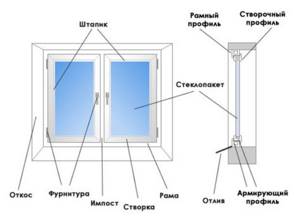
A double-glazed window rarely causes a violation of thermal insulation (the exception is its depressurization), but it can also be additionally insulated. “Extra” heat in winter will not hurt.
to identify leaky window - just run your palm along and across the entire structure, and you will feel that there is a decent amount of wind in some places. Some people recommend using a lighter for this purpose. If you light a flame and pass it around the perimeter of the window, maintaining a safe distance, it will tilt in those places where there is even a small draft. Be extremely careful with this method!
As a rule, work on insulating a plastic window can be done with your own hands. The exception is when it is necessary to insulate the slopes from the outside, and the apartment is located above the second floor. You need to be prepared that comprehensive insulation may be needed if several zones of warm air leaks are found, but first things first.

Hire specialists or do everything yourself?
There are a number of defects, the correction of which is preferable to entrust to specialists. These defects relate directly to the metal-plastic structure and include the following.
- Defects in the sealing material in the sash that opens.
- Defects in thermal insulation along the contour of the entire window.
- Malfunctions of window fittings or mechanisms.
The first point: you will need to insulate the ebbs and slopes of plastic windows from the outside, and this, of course, is not so easy to do, especially if we are talking about an apartment located above the second floor. Second: hand-made insulation will be a direct violation of the warranty conditions of both the manufacturer and the installer. Third: the quality of work will be guaranteed by hired specialists. Finally, the fourth important point: when performing repair work, professionals will use “original” fittings and window materials.

But if the home master has sufficient experience and knowledge, then he will only need high-quality instructions on how to insulate double-glazed windows in order to select the most suitable technology for specific conditions. As for the thermal insulation of the window frame contour, this procedure can be done with your own hands. Moreover, you can insulate ebbs, slopes and window sills yourself. Today we will find out how to do this, but first, let's take care of all the materials necessary for the work.
Exterior works
To more reliably protect the room from heat loss, it is necessary to insulate the window slopes from the outside as well. The best material for these purposes is penoplex. You will also need a special sealant for exterior use. In a private house, you can do the work yourself, but in a multi-story house it is better to use the services of professionals.
The technological sequence of operations is as follows:
- Clean the surfaces of external slopes from dust, dirt, paint residues, finishing and building materials.
- Level with cement mortar and allow the layer to dry.
- Cut the insulation into pieces of the required size.
- Coat the sheets with glue and install them on the slopes. Additionally secure in several places with dowels.

- Mount the corners. Do not neglect this stage. As a result, you will receive not only insulated, but also smooth slopes.
- Treat the front surface of the penoplex with special glue and secure the reinforcing mesh.

- Level with putty.
- After drying, apply water-based paint or other finishing materials.
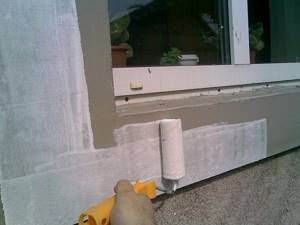
The issue of slope insulation should not be ignored. The microclimate in the house and the size of the electricity bills depend on how well and timely this is done. Moreover, the whole process can be carried out independently.
